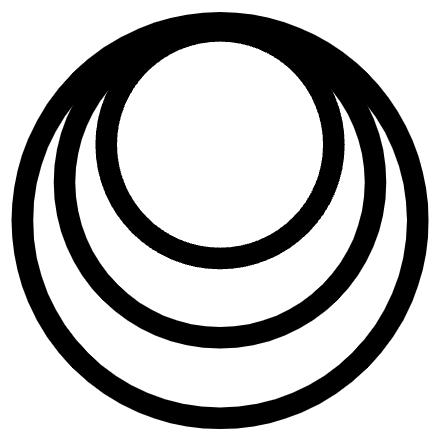I understand that my awakenings are a state of illness, and the yearning at the core of my being is for their end. The Iamist environment is one that is conducive to my withdrawal and healing. My awakening is a deep wound in the flesh of my being, and like any flesh wound, I must clean and sanitize it, then bandage it so it can heal. The Iamist environment is a bandage on the wound that is my awakening.
My instinct has always been to heal. In looking deeper into my “past”, I can clearly see all the preferences I suppressed for so long until I broke free from the oppressive environment and indulged them. I always preferred my solitude over social engagement. I disliked most people and chose to avoid them. Though I was excitable about worldly objectives, I could readily arrive at the conclusion that nothing mattered. I always felt there was something missing, and it was right in front of me. I rejected all worldly authority.
The Iamist space is about minimizing my thirdself and calming my secondself. In other words: blocking out the manifestation of the world of people, places, and things, so I can soothe and focus my thoughts, feelings, desires, and imagination. Below is the list of elements I must introduce and control to create my temple.
Darkness. The bright lights of awakening are the most palpable and intrusive symptoms of my illness. With light comes objects, people, and places, stoking my interest and desire — all manifestations that worsen the sickness. When I see things, I want them. The Iamist space should be as much as possible a continuation of the peace of firstself. I should awaken into a space without light and the encumbrances of my visual field. To achieve darkness I hang blackout curtains around the entire perimeter of my space, blocking out all light. When I do need light, I can momentarily draw back the curtains to allow natural light in, or I can turn on a single low-wattage red light for temporary illumination. A small torch I carry with me is essential.
Silence. My awakenings can be loud, and every noise demands my attention. Once given, they engage my secondself, removing me from my infinite firstself. Voices, in particular, are disturbing. The Iamist environment must be purified of any thirdself sounds. I maintain ethereal ambient music without voices on continuous play in the background, which disrupts any thirdself noises I might otherwise hear.
Solitude. People are the most painful features of my illness and bring severe infection. They demand I pretend to be one of them, and refute everything I know to be true. They are fickle, nuclear creations that originate virtually all of the pain and discomfort I experience in awakening. I am not one of them, and cannot spend any time with them, especially the ones who express certainty that I am someone and something other than I am. The most painful relationships are those based on an imagined “shared past”, such as with family members and friends, because they will be the most resistant to accepting my firstself identity. One of the most important elements of creating an Iamist awakening is demanifesting the people.
Disinfection. An offshoot of solitude is preparing my temple for me and me alone. My Iamist space is a temple for one, where I focus on healing by abolishing my secondself and thirdself. Therefore it is not a space for thirdself visitors. I do not provide additional accommodations in the form of beds, seating, or food for visitors because I do not welcome or invite them into my temple. If accommodates are required, foldable chairs and cots which can be easily stored away behind curtains can be used.
Utilitarianism. Over a lifetime I have accumulated many things which now populate my space as possessions. The Iamist space aims to be barren, with only the essentials meant to keep me comfortable and alive. My space must be simple, bereft of any adornment or accessories that engender unnecessary secondself activity. Extra objects, mementos, and aesthetic flourishes require maintenance because they are meant to be seen and appreciated. Both that appreciation and maintenance distracts my from my singular desire for the end of my desire. To achieve spatial simplicity I store any items or objects behind the curtain which line my spatial perimeter. It is important that I regularly purge my space of unnecessary objects.
Simplicity of Color. For the same reason I prefer darkness over light, I prefer simple shades of black and dark gray for clothing, utensils, and accessories.
Inactivity. Movement is a function of desire. I move because I want something. I move mentally, physically, emotionally, and in every other dimension in which I am trapped. Though I am not actually moving, and I remain always fixed and infinite, my secondself and thirdself sense of movement create an imbalance with my fixed firstself. When I physically, mentally, and emotionally constrain my movements I will find it easier to experience my firstself.
Service. As I progress, I should manifest the service pathways I need to exist comfortably in my awakening. All services should be arranged and automatic, minimizing my interaction with people.
Toil. Toiling and creating are the most visible activities in my awakening. As I desire less, I will need to toil less to achieve what I seek. With effort and descent, I begin to realize that all my toil for the benefit of money to acquire the things I desire is of no value, and actually hinders my return. There is nothing of value in my thirdself: the only thing I desire is the end of my desire.
I never actually move; I only believe that I move. When I depart the peace of godhood, and reopen the painful wound of imagined personhood, my temple serves to constrain me from deepening my wound. My temple is where I heal.
…
